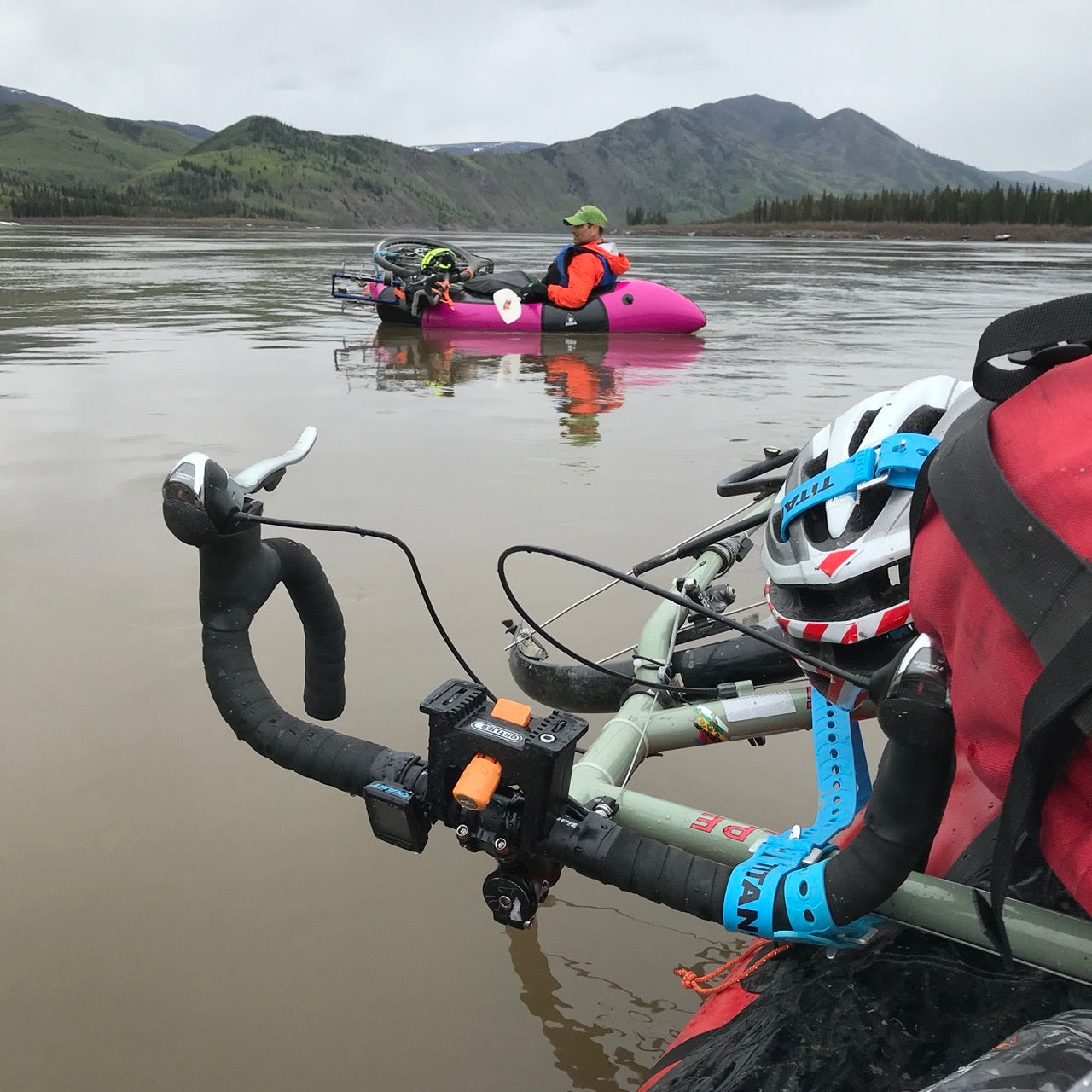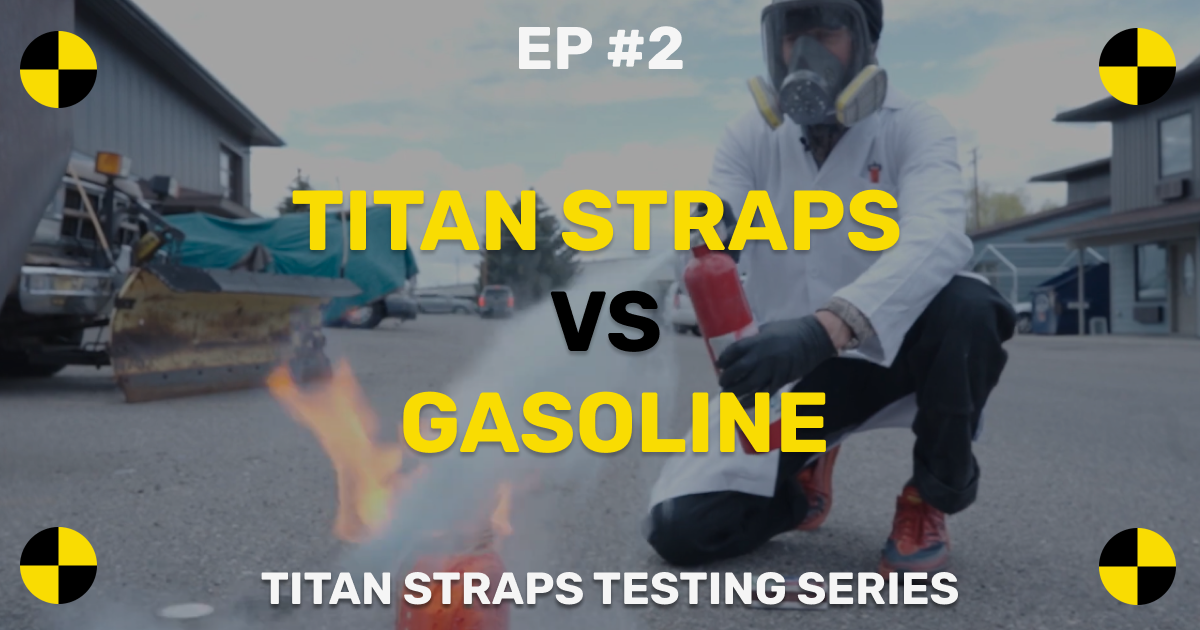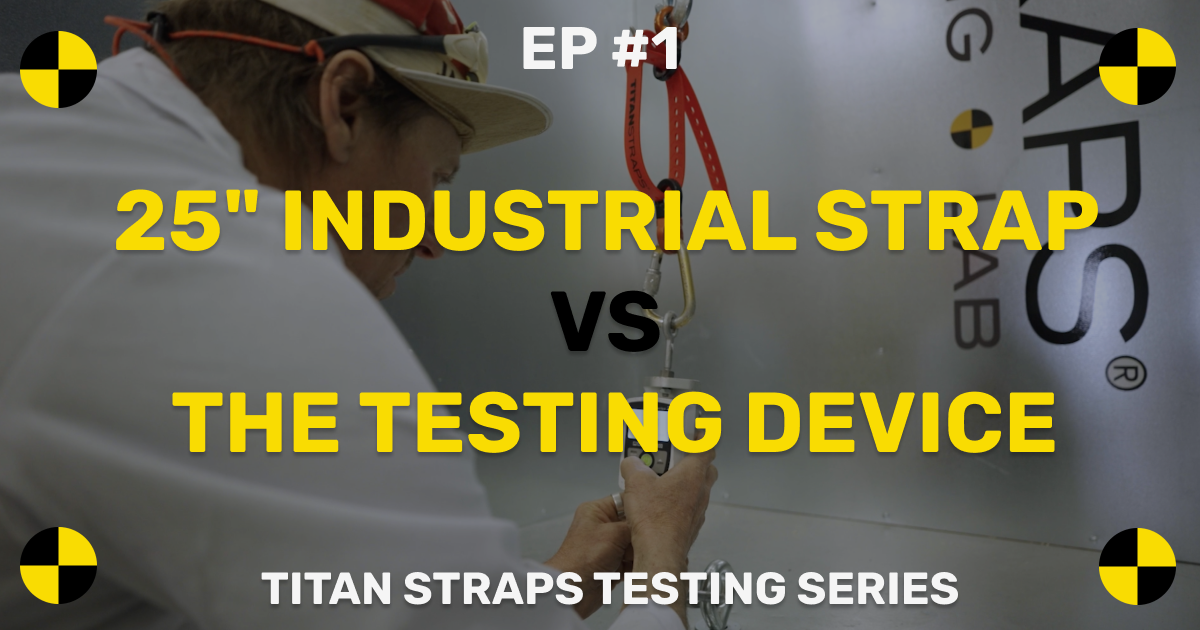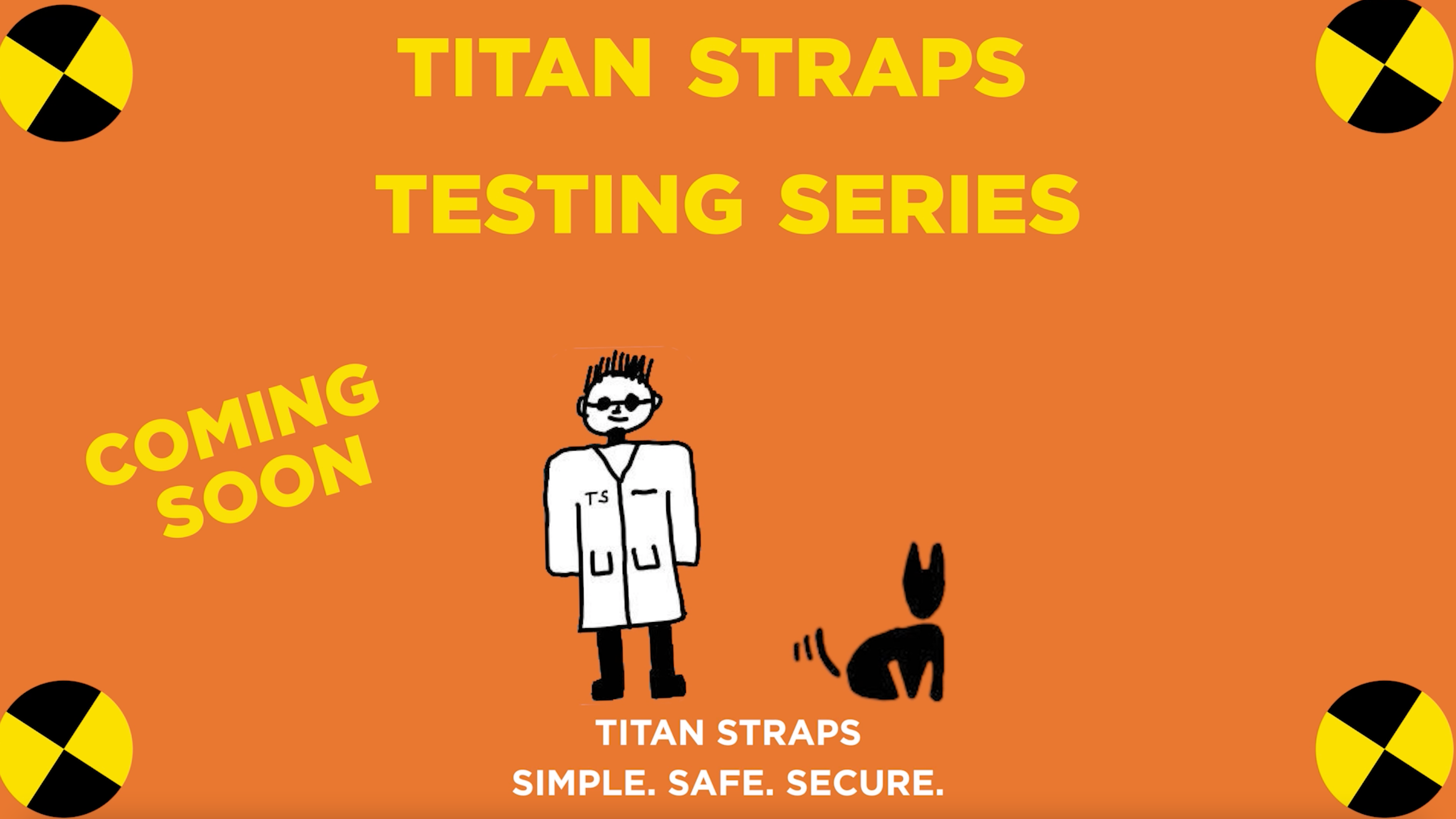Eastern Alaska Bikerafting: The Fairbanks Loop

Photos & story by Cameron Lawson
Titan Straps owner and former photographer Cameron Lawson is a long-time cyclist and multi-sport adventurer. Though he’s spent most of the last decade “packing boxes” and selling hundreds of thousands of the first wide, burly utility/ski straps on the market, he still manages to get out for a couple big Alaska bikerafting adventures each year.
Though based in Montana, Cameron especially loves our northernmost state, and has pedaled most of the major roads there over the last decade. Sometimes, in order to link roads in a more direct and efficient fashion, he brings packrafts along.
One year ago this month in May 2021, he convinced his childhood friend Paul Ferucci to spend ten days pedaling gravel bikes 500 miles and paddling packrafts 170 miles from and back to Fairbanks, via Eagle, the Yukon River and Circle. Here’s that story…

All The Roads
For the last decade I have pedaled as many of Alaska’s main roads as possible. My lifetime goal is to ride all the major roads there. However, Alaska is also full of waterways. So sometimes I bring packrafts along for ease of passage. Packrafts turn those blue lines on maps into trails, as Sheri Tingey of Alpacka Raft always says. And it’s true. I’ve been able to cover more ground in Alaska with packraft and bicycle in hand than I would have with just a bike.
So when’s the best time to go? Definitely spring and fall.
I love Alaska bikerafting during the shoulder season. Summertime you’ll see quite a few tourists, and winters are cold and dark. But go in the spring or fall, and as you get 20, 30 and 40 miles further from the city, you see fewer and fewer cars. By September 15, the people are mostly gone, but the colors are off the hook beautiful. And there are very few bugs and not much snow, except on the high peaks. That time of year, I also always see the aurora borealis. Wow.
But for this trip, we had time in the spring. Unfortunately, ten days before we parted, the Yukon River was still packed with ice bank to bank. Worried, I moved back my flight just a couple days hoping that some of that ice would break up. Luckily by the time we got to Fairbanks the ice dam along our route had opened up!
The Route
We started our Alaska bikerafting adventure by flying from Anchorage to Fairbanks via Paul’s airplane. We then rode from Fairbanks heading SE on Hwy. 2 to Delta Junction, where we spent the first night. We continued on to Tok. From there, we rode 15 miles to Tetlin Junction and then headed northeast on the Taylor Hwy. #5 to Chicken, where we saw a lot of cardboard cutouts of chicken in trees, drank cold beer in a small bar full of miners and crashed at the owner’s employee housing facility. From Chicken, we rode Hwy #5 to Eagle, where we put on the Yukon for 170 miles.
We spent a few nights on the river, which was a wild experience for various reasons. Thick glacier-like ice lined the banks 10 to 15 feet high and cooled the air around us. And I had my first terrifying bear experience.
The Grizzly
Ferocious winds had forced us to stop for camp in some alders along the side of the river. While deciding if we should stay or go, we noticed a grizzly had just popped out of the brush about 300 feet away. He was right at the junction of the Charley and Yukon rivers, sniffing around in the sand. The wind howled around us, so while we started yelling at it, it didn’t notice us at first.
Then suddenly it did.
The grizzly looked up and immediately starting trotting rapidly toward us. Paul had his bear spray, but mine was back at my boat. So this huge bear is running toward us and Paul is standing by himself, alone, with a small can of bear spray. Luckily when it was 150 or so feet of us, it decided to dart into the woods.
The Final Push!
The next morning we found ourselves floating through the Yukon-Charley National Preserve, where the Yukon becomes more braided and you’ll see occasional road houses for the Yukon Quest Sled Race. We stayed in one that night, and got to Circle the next evening around 10p.m.
We planned to spend the night in Circle, but the mosquitoes ravaged us. So we moved on another 20 miles where the landscape was colder and drier with fewer bugs. We camped one final night, and then ended up on Steese Highway, a 161-mile scenic byway in Alaska’s interior. From there we rode back to Fairbanks.
The Idea Behind the Bikerafting Alaska Trip
I decided to take packrafts on this trip for a couple reasons. Attaining my goal of riding all the major roads in Alaska could potentially be daunting because of the size of the state and all the water obstacles. I knew I wanted to ride from Fairbanks to Eagle. But looking at a map I realized I would have had to backtrack the entire route to get to the Steese Highway, a road I also wanted to pedal. However, if I just took the Yukon down to Circle, I could do a neat loop.
The Yukon is a big river, like the Mississippi. And it’s cold. But it doesn’t have many rapids. It’s basically Class I. While Paul had experience bike touring (he once did a trip across India), he had never been on a river in a packraft. However, I figured he’d be fine because it was a very gentle river. Introducing him to bikerafting, being in such a scenic area seeing few people and being on the trip with Paul were the best parts of the adventure!
We saw one hunter en route, but other than that the tourist boats hadn’t starting driving up and down river yet, and no planes flew overhead. It was wild. I love having outdoor experiences with a really great, long-time friend.
Advice for Newbies Embarking on an Alaska Bikerafting Adventure
Considerations
This trip was really mellow. If you can ride a bicycle and you have backcountry boating experience, you can throw gear on and easily do this trip.
On the other hand, you really need to understand what you’re getting into, from the weather to the route to the water you are paddling. Adding a packraft component to any trip will complicate it. You have to carry the extra gear—paddle, PFD and boat—which adds extra weight. And, though the Yukon is a big and friendly river, you could still drown and/or get hypothermia if your boat flips in the middle of the river. And if the wind picks up suddenly or a storm comes in, you need to know how to deal with those things.
Gear & Gear Lists
I overpacked for this adventure because I thought it was going to be colder than it was. It snowed right before we arrived, so I brought a heavy-duty sleeping bag and warmer clothes. Typically, I tend to prefer a bit of discomfort to overpacking. And I have learned over many decades what I really need and what I don’t need on biking, multi-sport or big wall climbing adventures. Sometimes you nail it, sometimes you don’t.
Plus, the only way to figure out what you don’t need and what you do need is to go on a lot of trips. That’s a great excuse to do more adventures, no?
I typically write in a notebook exactly what I am bringing on a trip. And while on the trip, I’ll write down the temperatures, what the wind is doing and what is typical weather for the time of year I’ll be there. If I notice I’m not using something, I’ll stop bringing in. However, I don’t always remember. So I go back to notes from previous trips and check the list to be reminded of what was really nice to have and what was unnecessary.
I also look at what other adventurers take with them on similar trips. Take one of our other ambassadors, Liz Sampey. She does many cool missions each year where she will list the gear she brings. I’ll take a look at what she eats and what she brings. It can be really helpful.

Bear Spray in Alaska
Always have your bear spray on hand, literally in your jacket pocket. When that bear started to run towards us, I didn’t have my bear spray. Paul did. But you can imagine what might have happened if he didn’t and if that bear decided to continue to charge us… I felt like an idiot. I put both of us at risk by not having bear spray. Grizzlies are a real danger in Alaska. You need to be ready at a moment’s notice.
Route Finding
I typically take only paper maps, but I see great value in GPS, especially after this trip. This route was a relatively easy one. However, the Yukon becomes very braided as you approach Circle. And the little Native villages nestled along the shores of the river don’t have big buildings or anything to identify them. Subsequently, they’re difficult to find using paper maps. And if you end up in the wrong river channel you could completely bypass your takeout. The channels are like rivers themselves. We utilized Paul’s GPS to figure out exactly where Circle was.
Fitness
I strive to ride 100 miles per day. So while the terrain wasn’t challenging to paddle or pedal, the overall mileage might be a bit much for some people. So be prepared by training on both your bike and in your packraft in the months prior to your trip. Though I claim to be an “off the couch athlete,” I am actually constantly active, riding my bike as much as possible and walking my dog many miles daily.

Last Word
If you have the time, this awesome Alaska bikerafting adventure combines some scenic bike touring on paved and gravel roads and 170 miles on the Yukon River. And bonus, if you go in the early spring, when we went, you won’t see any people! It’s definitely a worthy bikerafting tour and not too gnarly of a trip either to plan or implement.
Want to learn more about bikerafting? Check out our blog post, “The Bikeraft Guide: How-To Packrafts & Raft Gear.”
Follow us @titanstraps on Instagram to see more photos from this adventure all this week!











